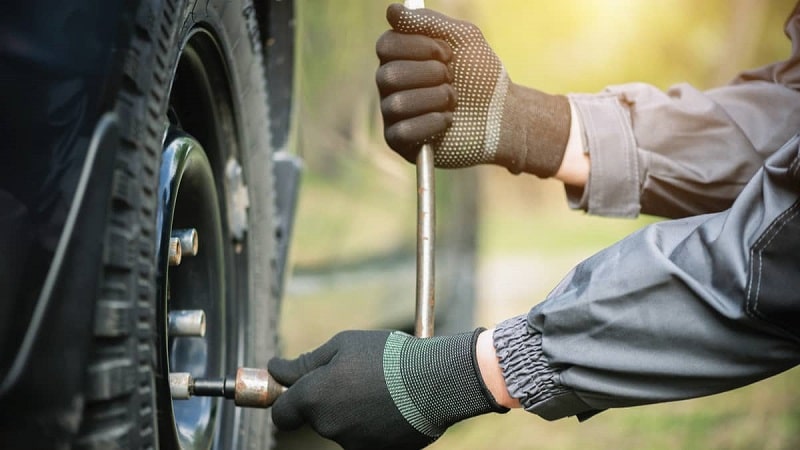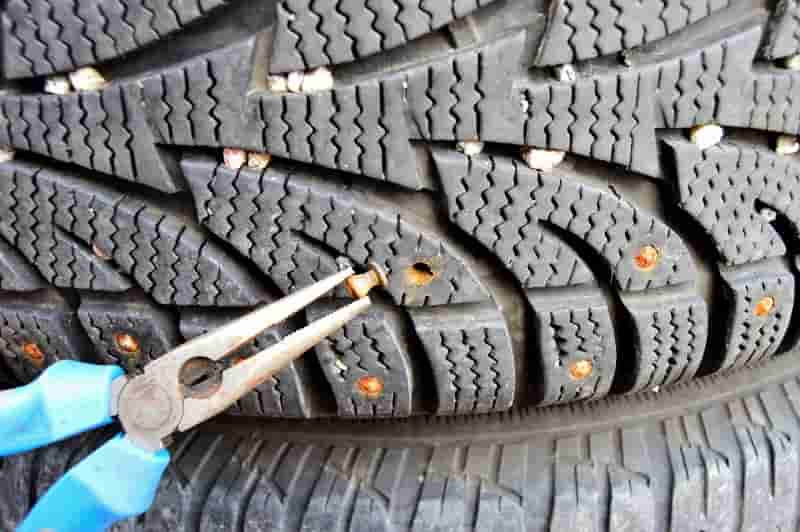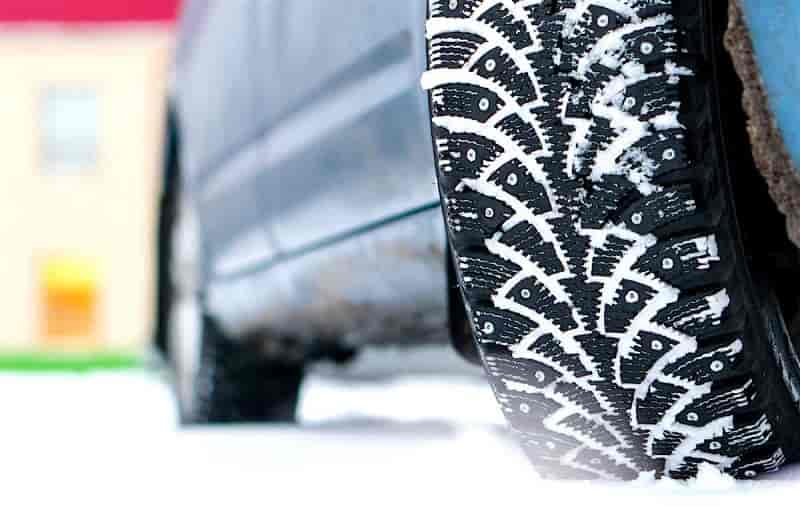Studded tires are a lifeline in winter conditions for many drivers. As winter wears off, the studs can become a problem. They are banned in most states after the threat of significant cold weather has passed. You need to either remove the tires from your car or remove the studs from the tires.
If you opt to extract the studs, check the amount of tread depth remaining on the tires. It is ideal that if you have 7/32 inch or more tread depth, removing the nails will be worth the effort. Take care not to damage the tires during the removal process. Now, let's learn how to remove studs from tires.
Contents
How to remove studs from tires with 4 quick and simple steps
Step 1: Remove the tire from the car
You will have a lot of trouble without removing the tires from your vehicle. Using a wrench and screwdriver to loosen the nuts on the wheel with the studded tire. Using jack up to the corner of the car where the studded tire is mounted. Finish unscrewing and removing the lug nuts. Lift the tire and wheel off the car.

Step 2: Lubricate the studs
To help you remove studs from tires quickly, you need to lubricate the studs first. You will find about 80-100 studs on each tire, and you have to lubricate and remove them all. If you have tire change equipment, use it to hold the tire securely. Otherwise, stabilize the tire and wheel as much as possible while holding the studs on the winter tire.
Step 3: Remove the studs
Grip a stud with a pair of pliers or locking pliers. Pull up on the stud by twisting it. The twisting action will break the bond between the stud and the tire.
Pull until we extract the stud from the tire. Do not pump up and down on the stud. This can damage the tire and cause a leak. If the stud proves difficult to remove, try turning more until it is loose in the hole. When it feels easier to turn, try pulling again. Continue until we can remove all studs from the tire.
Step 4: Check the tire after removing the studs
Immerse the tire in a basin of water and check the tire for leaks. Focus on the holes that remained after the studs were removed. If there are any leaks, repair them before replacing the rear tire on the car. If there are no leaks, fit the tire and wheel to the car. You may need to have the tires balanced after we remove the studs for a smoother ride. Repeat this entire process for each studded tire.

Are studded tires right for you?
Studded tires are effective on icy roads. They allow better traction on this adherent surface and shorten braking distances. These tires are preferable to their classic versions in only three cases. It is also the case if your vehicle has to go up or down a steep slope that is often found icy in winter. Or if you drive a powerful rear-wheel-drive vehicle (rear-wheel-drive only), such as a Ford Mustang or a BMW M3.
If you are driving on well-cleared city roads and highways, studded tires will not offer you an advantage. It is even rather the opposite! Studded tires are noisier than non-studded winter tires that could get in the way if you are driving long distances on highways that have been cleared of snow. Another drawback is that something slightly lengthens the braking distances on dry or wet pavement. Do you live in a large metropolitan area? It is more interesting to opt for winter tires without studs.
Yet, many drivers no longer want to go back once they have used studded tires for the first time. "After seeing greater efficiency in a specific situation, drivers are convinced of the benefits of studded tires, even if this type of tire is not suitable for their daily use," says the APA.
Are Studded Tires Banned?
Equipping your vehicle with winter tires, or snow tires, is not compulsory, except in certain sections in winter. This information is widely known. Many people think the Government does not authorize studded tires in many countries. It is not true. To allow you to see more clearly, here is a point on the legislation.
What does international legislation say about winter tires?
Certain sections of the road, during the winter period, show the obligation to have specific equipment such as chains, socks, or even crampons: signage by B26 signs. But winter tires are not mandatory, especially when temperatures drop below 7 Celsius degrees. The winter tire comes to have better grip and resist wear on icy roads.
In France, they allowed studded tires from the Saturday preceding November 11 until the last Sunday in March the following year, as shown by the decree of July 18, 1985. The studs provide the best grip on delicate surfaces such as ice and snow. They can be ideal in French or Italian regions with a very harsh climate.

The legislative framework for equipment with studded tires
A few conditions apply to the equipment with studded tires:
- 90 km/h for vehicles with a permissible total loaded weight not exceeding 3.5 tonnes.
- 60 km/h for public transport vehicles and vehicles benefiting from exemptions if the weather so requires. They include emergency response vehicles, rescue vehicles. The vehicles must provide transport of first necessity, perishable foodstuffs or dangerous materials, or vehicles ensuring winter viability.
The obligation to display, at the rear of the vehicle, a specific badge showing the equipment of studded tires. It also defined the shapes and dimensions of the studs in this decree and differed from one country to another.
Conclusion
In collaboration with tire manufacturers and distributors, many tire manufacturers adapt their ranges of studded tires according to the regulations of each country. If you equip your vehicle with studded tires and you are traveling, do not forget to check the legislation of countries that you may have to cross!
We hope this how to remove studs from tires quickly and easily will help you do it yourself at home, without having to go to an auto repair center.
I’m Ivo Gievski, the content writer for Tireer. We built our website with over 15 years of experience and extensive research in the automotive and technology sectors. My dedication to delivering high-quality content is unwavering, and I strive to continuously hone my skills to stay ahead of industry trends and provide readers with informative, engaging, and valuable insights.